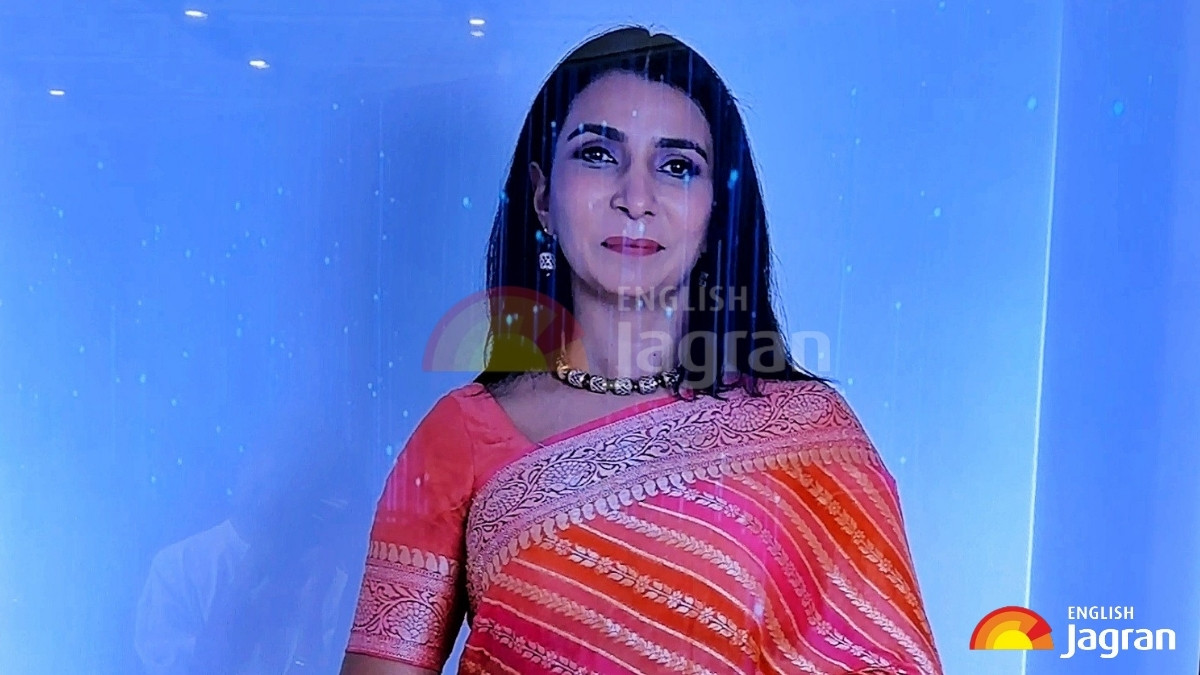- By Vikas Yadav
- Fri, 08 Sep 2023 07:10 PM (IST)
- Source:JND
G20 Summit 2023: A special exhibition 'Bharat: Mother of Democracy' will be organised at Pragati Maidan, New Delhi for the high-profile guests to highlight Indian traditions and democratic values. The showcase will leverage the vast potential of several technologies including artificial intelligence (AI).
For starters, an AI Anchor will offer tailored greetings in the traditional Indian way - Namaste. Plus, other exhibits such as Ask GITA and interactive panels will also harness the power of AI to enrich the visitor experience. Here is an exclusive report on these advanced technologies.
AI Holobox
The holobox features an AI anchor which is created by three Machine Learning (ML) models. Saurav Bhaik, CEO and Founder of Tagbin, the company behind the innovation, told Jagran English that in this hologram mechanism, a video clip of at least 10 minutes is fed to the model that generates the digital version of a person using generative AI. The tech can replicate gestures, lips, eyes, hand movements and facial reactions for lifelike visuals.

Image: Tagbin/Special Arrangement
Another model clones the voice to maintain the natural accent and dialect in the personality. It can be programmed to speak anything. Lastly, a large language model (LLM) combines the two to synchronise guest identification and message delivery.
The database has been fed with pictures and names of some of the delegates to recognise and address them in real-time once they stand in front of it. The neural network has been trained via a Generative Adversarial Network (GAN) model for videos, Bhaik added.
Ask GITA
Ask GITA (Guidance, Inspiration, Transformation, and Action) utilises an ML model trained on a digital version of the Shrimad Bhagwad Gita. The platform delivers answers to general queries from the resource bank of GITA, citing shlokas in the answers (available in Hindi or English). All the dignitaries can experience this.

Image: Tagbin
How Does Ask GITA Work?
The first step involves speech-to-text when it listens to the speaker. This is followed by exploring the context behind the question using a Large Language Model (LLM). Ask GITA then find the appropriate content and prepare the answer in a "classical" manner. This output is converted to speech before the user listens to it. While it looks complicated and time-consuming, the process happens in a few seconds. It is available to users on the web. You can also try the model from this link - askgita.ai
Interactive Panels
The panels, 18 stacked in one row and four at each extreme end in a straight line (26 in total), are another highlight of the tech prowess of the showcase. These panels talk about the democratic values of different historical eras, from the Sindhu-Saraswati civilisation to the elections of modern India. They also offer insights into the democratic ethos of the Ramayana, Mahabharat and more. As per Tagbin, the content presented in these kiosks is produced using AI, and audio media to explore them is available in 16 languages.

Image: Tagbin/Special Arrangement
According to Bhaik, the aim of the AI Anchor, Ask GITA and other technologies is to present a blend of traditional and democratic values of India with the advancements in technology.
On a related note, when questioned about the selection of the Dancing Girl of the Indus Valley civilisation, he explained to JE: "The sculpture, which is over four-thousand-year-old, serves as a symbol of confidence and equality for women during that era. This indicates India has a long-standing democratic approach towards women. This idea was to present this." You can read about this exhibit here.

